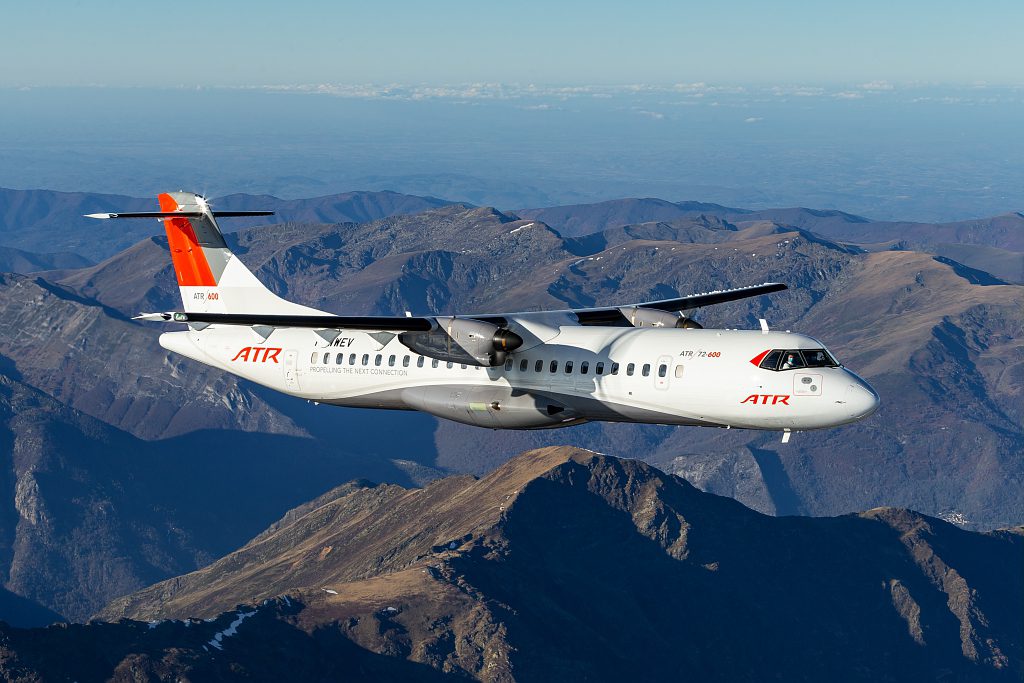
ATR 109503 BD
Commercial aviation essentially has two monopolies—Embraer for regional jets and ATR for turboprops.
ATR reported their 2023 numbers, and, no surprise, they look good.
- ATR targets book-to-bill >1 in 2024
- Sales and deliveries surge by 53% and 44%, respectively, vs 2022
- Record year for support and services – 15% increase vs 2022
- 11 new customers of both new and pre-owned aircraft
- 160 new routes opened with ATR aircraft worldwide
ATR announced its 2023 annual results, highlighting robust growth through increased deliveries and sales, strong performance of support and services, acquisition of new customers, and route creation.
ATR delivered 36 aircraft in 2023, a 44% increase from 2022. This reflects a positive momentum, while the year was still beset by lingering supply chain disruptions, with raw material and component shortages slowing down the manufacturer’s ambition to ramp up.
With 40 new aircraft sold in 2023, a 53% rise from the prior year, the company achieved a book-to-bill ratio of over 1. ATR welcomed 11 new customers in 2023 of both new and pre-owned aircraft and recorded over 100 transactions on the second-hand market, demonstrating the strong demand for ATR’s advanced, low-emission, and cost-effective turboprops. While Asia remains ATR’s most dynamic market, the company secured orders from Latin American and European customers in 2023 for fleet growth and replacement. Overall, 160 new routes were opened by ATR aircraft last year, up from 150 in 2022.
ATR achieved almost $1.2 billion in revenues for the first time since the pandemic, supported by a record year for services with revenues over $400 million.
Looking at the regional market, the company sees further demand in the coming years, with expected fleet growth mainly in South Asia (India), South-East Asia (Indonesia, Philippines), and Brazil. New regulations related to rising environmental pressure also create opportunities for ATR to capture a significant portion of the replacement market, especially in Europe, Japan, Canada, and the United States. ATR aircraft offer an immediate solution to reduce emissions dramatically compared to similar-size regional jets.
And the part talking about Canada and the United States gets interesting. We have been watching this market for ages.
Canada, more so, and the US, less so, don’t focus on emissions cuts like the Europeans do. Their geography does not favor high-speed trains. These two markets will remain dependent on air travel.
ATR has done well worldwide but much less so in North America. The other (former) Western turboprop OEM, De Havilland Canada (DHC), didn’t do that well either, but their Dash 8 did outsell the ATR handily.
Readers may recall the Dash 8’s biggest advantage was speed – it is better able to feed networks. But that came with higher fuel burn. In North American use, turboprops were niche operations. The largest was Porter out of Tornonto’s Billy Bishop. Westjet has several Dash 8s, and they were selected over the ATR because the Canadian Rockies guide operators to err on the side of more power. A Dash 8 could lose an engine over that region and still get over the Rockies.
ATR had success with Silver Airways in Florida and some success with FedEx. However, the US market has not been good for turboprops in many years. DHC had a campaign to persuade Southwest of the potential of their Dash 8 as a regional feeder. Southwest demurred since that airline only knows about 737s.
The truth is, with well over 300 US communities having lost air service, one might think this is the moment that ATR has been waiting for. Several years ago, they flew a demo ATR 72-600 to the US to show it off. Your correspondent got to ride it and was impressed. It was as quiet as the Dash 8, and the ATR team assured us it was cheaper than the Dash 8.
ATR is now facing off against electric airplane programs that are starting to appear everywhere. ATR has the edge on range, payload, and speed. Moreover, it needs to be said that the ATR is a far lower risk for an operator. Operators at the feeder side of the industry have no appetite for risk. Their margins are too thin, and they face the most stress keeping pilots.
But a turboprop to the nearest hub means a lot if you live in a US (or Canadian) community with no air service. Principally, it saves time – this is hours each way for many people. Moreover, even though the ATR is not that much slower than a regional jet, it won’t push a traveler to prefer driving. Then there is also the safety issue – driving is less safe than flying.
Are the stars aligned for ATR in North America? This is the same question being asked at Deutsche Aircraft. The North American market is large. Geography demands air travel given distances and time. These are two winning forces on their own. Then add to this that turboprops burn half the fuel of a 50-seat regional jet. That alone makes them substantially greener and cheaper to operate. Moreover, the ATR and 328Eco have Pratt & Whitney Canada engines that can burn SAF. There are good reasons to deploy turboprops in the North American market.
ATR’s wording focuses on capturing the replacement market in Canada and the United States. Their ambitions should be much bigger. Can ATR (and Deutsche Aircraft) win over the operators in these markets? This is the acid test. Given the number of airlines with greenwashing orders for electric aircraft still in development, you’d think the answer is self-evident. To break into the market, we recommend ATR make a beeline to St. George, Utah, and do whatever deal they need with SkyWest. Winning that one customer will unleash the lemmings.
Views: 28




